Cloud Computing Key Enabling Technology
Cloud Computing Key Enabling Technology
The World Wide Web and network are the foundation of the future of technology known as cloud computing, offering client’s services in a variety of ways.
It is a straightforward data outsourcing source that may also be used on a temporary basis. Users can pay only for the services they actually need, making it cost-effective. Common web browsers and a fast connection to the internet are needed to use apps in the cloud.
By combining its collection of resources with customer pages or IP, it quickly provides expandable accessibility when requested by a customer.
Components of Cloud Computing Key Enabling Technologies:
Cloud storage, cloud data centres, cloud APIs, and virtualization are a few examples of major technologies that enable cloud computing. The process of virtualization enables an online machine (VM) to function on an actual server. A loosely linked set of offerings can be used to build applications thanks to SOA.
Virtualization, service-oriented architecture (SOA), and cloud management platforms are some of these developments. The ability to create loosely linked services that are simple to integrate and repurpose makes SOA another essential innovation in cloud computing. Cloud computing environments are made up of a variety of assets and amenities, which are managed and coordinated by cloud administration tools.
An actual workstation can be partitioned into several virtual machines (VMs) via virtualization, each of which may operate a distinct software operating system (OS) and applications.
This makes it possible for companies to run many programmes on just one actual system, which can increase utilisation and cut expenses. Due to its ability to support the development of services that can be accessed over a connection, SOA is an important technology for cloud computing.
A software architectural approach called SOA enables the development of software as a collection of services that may be consumed across the internet. This makes it possible for companies to develop programmes that can be downloaded and used online, which can increase accessibility and save expenses.
While they make it possible to run software via an internet connection, web services are a vital tool for cloud computing.
This gives companies the ability to develop web-based applications that may be used to increase accessibility and cut expenses. In this post, we go over the primary technology enablers for online computing.
Technologies enter (Broadband) The networks and the internet Buildings, Data centre Technologies, virtualization Innovation, Web Innovation, and Multitenant technology, customer service Model type (Platform-as-a-Service (PaaS), Software on a Service (SaaS), and Facilities as a Service (IaaS), and customer Industry (Banking, Banking, Finance, and Risk management (BFSI), Manufacturing, which is healthcare), are the segments that make up the cloud-enabling technological advances in the marketplace.
When referring to cloud computing, the word "technology" might mean several different things. For instance, certain specialists refer to the use paradigms (SaaS, etc.) indicated previously as "cloud technologies."
Following are some more technologies and terminology that will likely be widely used in the area of cloud computing in 2023 in light of this.
Cloud APIS:
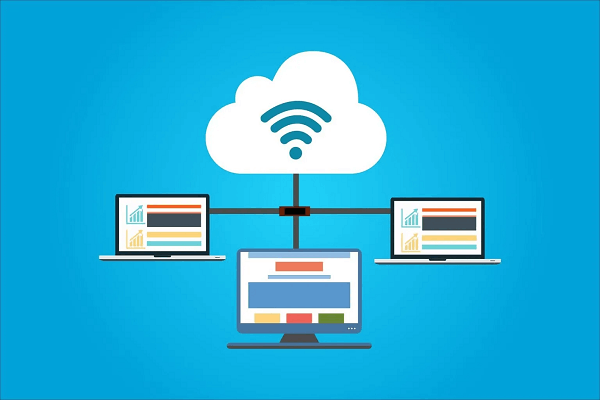
The app and the cloud are connected by cloud APIs. Cloud APIs provide a wide range of capacity, and each of them has special qualities of its own. REST-based application programming interfaces, which offer a straightforward yet effective way for connecting to cloud services, are among the more popular cloud APIs.
Other well-liked cloud APIs included Java APIs and SOAP APIs, which provided a more robust interface to on-demand services as well as more sophisticated features, respectively. In order for a system using cloud computing to work, it must be present. They are the key to releasing the capabilities of the Internet of Things and offer the capacity to use the cloud in a safe and effective manner.
A collection of programming interfaces that make it easy and common for creators of software to use services in the cloud.
Despite being concerned about the foundational framework, programmers may create programmes that benefit from the capacity and adaptability of cloud computing by using internet APIs. Cloud APIs come in a wide variety, and each one has a unique set of features.
Cloud APIs are also provided by other vendors of services, like the Oracle Cloud and the Alibaba Cloud.
It can be difficult to select the most effective cloud API for your application. You must first choose which cloud platform you want to use. The subsequent phase is to choose the API functionality you require.
Different APIs provide different levels of capability. Pricing is the last thing you should think about. You may utilise the scale and adaptability of the cloud along with the correct API to create an app of the highest calibre.
Cloud Storage:
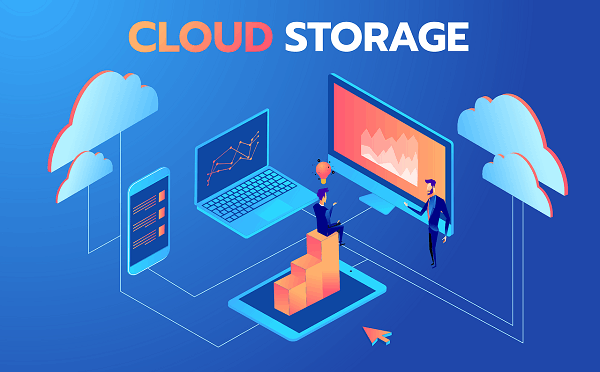
Maintaining information in the cloud is effective and practical. It is possible to access it from virtually any location across the globe, and it is incredibly secure. Furthermore, storage in the cloud might make it simpler for you to transfer files. For instance, let's say you wish to send somebody a huge video file. You may upload it to the internet and then distribute the URL.
If you keep your data nearby, you run the chance of deleting everything if the gadget is lost or destroyed. Nevertheless, if you keep your documents in the cloud, you may feel secure realising that their contents are secure and are accessible from anywhere. Here is an easy method to store crucial data in the event of personal information loss, and it also allows to store and exchange information. In the beginning, think about how much storage you're going to require.
To ensure you only pay for the amount of space you really use, several cloud storage companies offer scaled pricing. The type of files you will be storing is the second thing to consider. Certain storage companies provide extra security measures for personally identifiable information.
Select a respectable and trustworthy source, and that's it. Discover the ideal choice that meets what you require by doing a little investigating on the numerous fantastic cloud-based storage alternatives that are accessible.
Cloud Data centres:

The foundation of today's financial system is data centres, and for companies of every kind, the internet of things has become the data centre of choice. The versatility, capacity, and expense savings that cloud computing centres provide over conventional in-house data centres are just a few of their benefits.
The cloud service provider can immediately set up an additional instance to fill in for any lost resources in case a particular data centre goes inaccessible. The public cloud is the obvious option if your company is searching for an information centre platform that can accommodate its demands now and expand as it grows.
Information and computing power are centrally located in data storage centres, which can be either physical or virtual facilities. Usually, cloud computing centres are built to have an excellent level of tolerance for failures and to be highly configurable.
Virtualization:
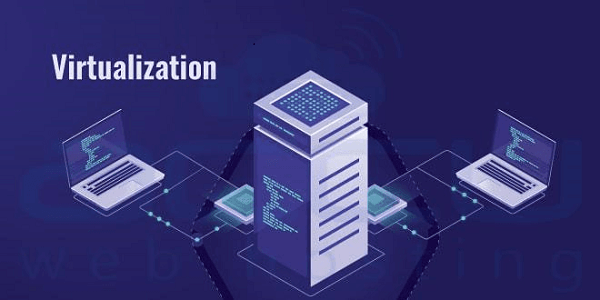
Virtualization is the final important enabler on the agenda of cloud computing technology. What would involve a machine with an OS or other storage medium developed as a simulated (instead of an actual) representation of the actual thing? Despite lowering expenses, virtualization can improve IT agility, productivity, and adaptability.
As the title suggests, computing in the cloud is built on sharing capabilities (servers, storage, and applications) through the worldwide web ("the cloud"). Technologies that are scalable, pay-as-you-go, on demand, and accessible from everywhere at any time are possible with cloud computing.
Coupling cloud services with virtualization can frequently result in flexible and scalable IT infrastructure. Businesses can profit from the two methods by encapsulating assets and using cloud computing to run them.
It is the procedure of distributing licence keys for real-life uses of software across different business customers. A typical copy of the online app will be made available to all users as a primary goal of this type of technology. Its adaptability and quick pace make it a common choice. A few varieties of virtualization include
Hardware virtualization: Although virtual computers may be controlled more easily than an actual server, it is known as virtualization of hardware if a virtual machine is put directly on equipment servers.
Operating Systems Virtualization refers to the process of installing a virtual machine on an outside server as opposed to a physical computer. It improved the software testing environment acrossdifferent OS systems.
Server Virtualization: The term "server virtualization" refers to the installation of virtual computers on a computer system. It is split into numerous assets and used for distributing loads on demand.
Storage Virtualization: Acquiring data in physical form from several networking storage media is the technique that goes under the name of storage virtualization. It is mostly used for recovery and storage.
Service Oriented Architecture:
The SOA application separates components into distinct company activities and daily operations. A distinctive feature of an app that is cloud-based is that it permits cloud-related configurations that may be changed and updated upon request as needed by a company.
The quality-as-service and software-as-service elements are the two main parts of a services-oriented system. Determine the intent and behaviour of an organisation from an alternate point of view for the purpose of enhancing the service.
The worldwide proliferation of application service suppliers has given rise to a new way of delivering software, thereby known as "computer software as a service."
Grid Computing:
This refers to a method of tying together different servers from various locations in order to accomplish a single objective. By breaking down major issues into smaller problems, workstations are transmitted to and placed inside the grid through the use of computing on the grid.
It is primarily used in e-commerce and is designed for distributing resources on massively scalable computing clusters. Folding@home is a well-known collaborative computing undertaking. The project's goal is to identify disorders connected with antibody packing and misfolding. It entails using unused hardware and software to tackle challenging intellectual tasks.
Utility Computing:
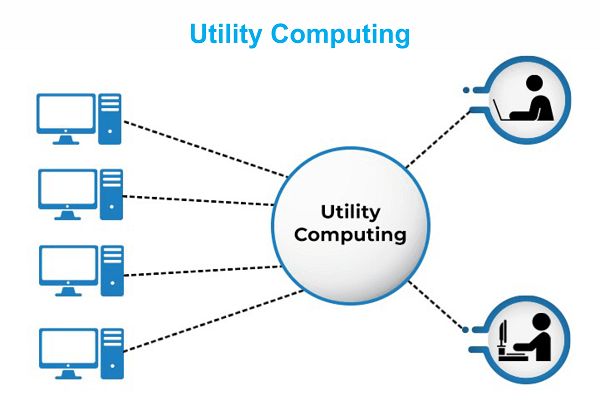
The pay-per-use approach is utilised in this procedure. For metering purposes, it offers computing services on request. By lowering the initial expenditure, it mostly aids in cost reduction. Billing information changes in accordance with changes in an organisation's computing needs without incurring any extra expenditure. The cost of billing likewise decreases in line with a decline in client usage.
Where we use cloud computing enabling technologies:
Infrastructure as a service:
There are both physical and electronic machines available with cloud computing. Connectivity to the physical computers is provided via hypervisor systems that are organised into pools and controlled by support for operation systems. Running foundation images on actual devices as well as application programming are introduced by the internet of things.
Technologies such as network firewalls, internet protocol addresses, surveillance services, retention, connectivity, machine virtualization, and more are made accessible to clients as a service under the umbrella of infrastructure. A few examples are Rackspace, Google Compute Engine, Amazon EC2, and Azure from Microsoft.
Platform as a service:
It is a component of the platform that is used for developing and deploying applications and is made accessible to coders and builders. The lower floor may be efficiently used by them to create, distribute, test, and manage software-as-a service applications. One of PaaS's key features is point-and-click software that enables programmers to create web-based apps. A few examples are the search engine, Windows Azure, Force.com, Apache, and AWS Elastic Beanstalk.
Software as a service:
It is the conveyance of Applications that reach users using browsers for the web. Installed on internet clients, services can be made available for operation on a cloud-based system. However, it is not necessary for this to happen, as they lack assistance with the software and require little upkeep. Rather, businesses can take advantage of mobile, cloud-based applications. The best illustration is an office suite. SaaS gives us an interface called the Application Programming Interface (API), which enables the programmers to create the needed software.
Benefits of Cloud Computing Technologies:
Listed below are some benefits of cloud computing.
High scalability:
It calls for the automatic, massive provision of materials.
High availability and dependability:
The computers are readily accessible at the appropriate moment without any hiccups or disappointments.
Agility:
It works swiftly and shares the resources that are accessible among the users.
Multi-sharing:
With the help of collaborative computer science, a variety of clients from various locations can pool identical resources.
Because the devices are simple to find from anywhere and don't need any setting up, they are simple to use in terms of management.
Low price:
It speaks for itself very quickly and is extremely inexpensive.
Capabilities offered in a pay-per-use model:
Customers are provided access to an application programming interface so they can consume assets and amenities and pay as they go.
On-Demand Self Service:
Cloud-based computing provides the customer with the services and applications that they need. Without interacting with any people or suppliers of cloud services, they can begin using the provided login key.
Computers with virtual capabilities and storage are part of it.
Cloud computing enabling technology market analysis:
The global market for cloud-enabling software was estimated to be worth USD 28.68 billion in the year 2020, and it is projected to rise to USD 46.17 billion by 2026, with a CAGR of 8.26% for the period of forecasting from 2021 to 2026.
More automation is required for corporate operations to run efficiently, given the expanding application of the Internet and Big Data analysis. In order to work properly, cloud-enabling software is essential.
Numerous consumers are able to employ connected resources thanks to innovative and cutting-edge cloud computing offerings, which also help businesses cut costs. Technologies can quickly adapt to changing circumstances thanks to the cloud, which additionally brings the necessary adjustments. These elements support organisations' development by enabling them to concentrate on their primary competencies.In light of this, the demand for cloud-enabling technologies has a bright future.
Additionally, the privately owned cloud deployment strategy provides flexible on-demand availability of computing horsepower within a publicly accessible cloud, ensuring an elevated level of privacy amongst various organisations employing the facilities. This reason is boosting the growth of the market for cloud-enabling technologies.
On the other side, worries over the security of information are impeding the development of this market. Throughout the time frame anticipated, this factor is anticipated to be a limitation for this sector of the economy.
Cloud computing enabling technology industry segmentation:
The use of computing assets that are provided to clients through the web is known as cloud-enabling technologies. Multiple sectors, including power and electricity, natural gas and oil, structures and development, communication, transportation, etc., are adopting cloud-based computing technology at an increasing rate.
The marketplace's increased demand for cloud computing is mostly due to the increasing use of robotics in a variety of industries to increase efficiency. Furthermore, it is anticipated that cloud-enabling technology will see phenomenal growth opportunities due to increasing requirements for data intake, analysis, preservation, and protection.
Cloud Computing Enabling Technology Market Trends:
The following part discusses the key marketplace developments that, in the opinion of our team of specialists, are influencing the marketplace for cloud-enabling technology:
Cloud Data Centre to Offer Potential Growth:
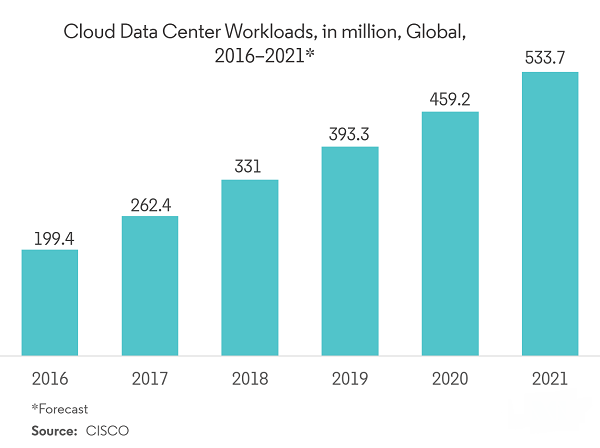
Modern software development is centred on information stored in cloud centres, and these facilities play an essential role in the growing capacities of businesses. The need for data stored in cloud data centres is far greater than that of conventional data centres as people increasingly operate outside of their houses.
And data is the lifeblood of a company.
They need details about their clients and consumer behaviour, as well as data concerning their operations, sales, and marketing campaigns, as well as a host of other topics.
With cutting-edge IT solutions and services, businesses are now counting on data centre services and online computing to help maintain and optimise company applications. They usually handle the information flow, especially in the retail sector.
Considering the advantages that data centres offer, including flexibility, they can quickly respond to alterations in online demand and company demands. With the right arrangement, this might occur quickly with little to no client disruption. For example, over one hundred million things were bought through the website when Amazon's prime-day promotion began.
Such increases in volume are made feasible by data centres by facilitating easy transactions between customers.
The aforementioned elements influence the expansion of data centres hosted in the cloud for various businesses.
North America to Lead The Market:
It is anticipated that the use and profitability of online computing will both grow strongly in the coming years. It is anticipated that the potential for the market in the United States will increase as a result of the company's growing investments in computer systems and cloud-based services, in addition to its support of Cross-Border Privacy Rules (CBPR).
A demand for cloud-enabling technology is anticipated to be created as a result of the region's expanding access to the internet, which is also projected to contribute to the rise of the online service marketplace in the area. In Canada, the World Wide Web is accessible to roughly 93% of the general population.
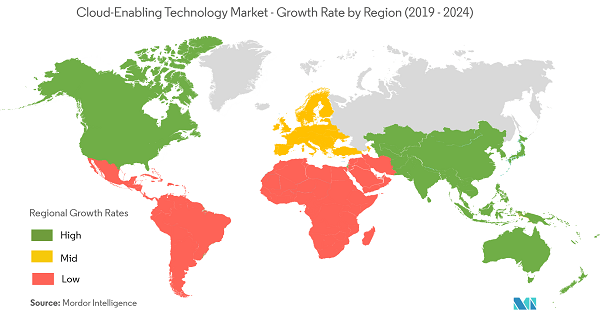
Conclusion:
Broad network access is a distinctive feature of the internet of things that enables quick access to enormous assets like space and simulated machines from mobile devices, private notebooks, and desktop PCs. As a result, anyone can access it whenever they want.
Resource sharing offers quick adaptability to services utilised by consumers or previously assigned to customers, which are immediately monitored. It enables multiple people to share a shared pool, such as the database, apps, and web pages. The resource in question can be scaled up or down at any time.